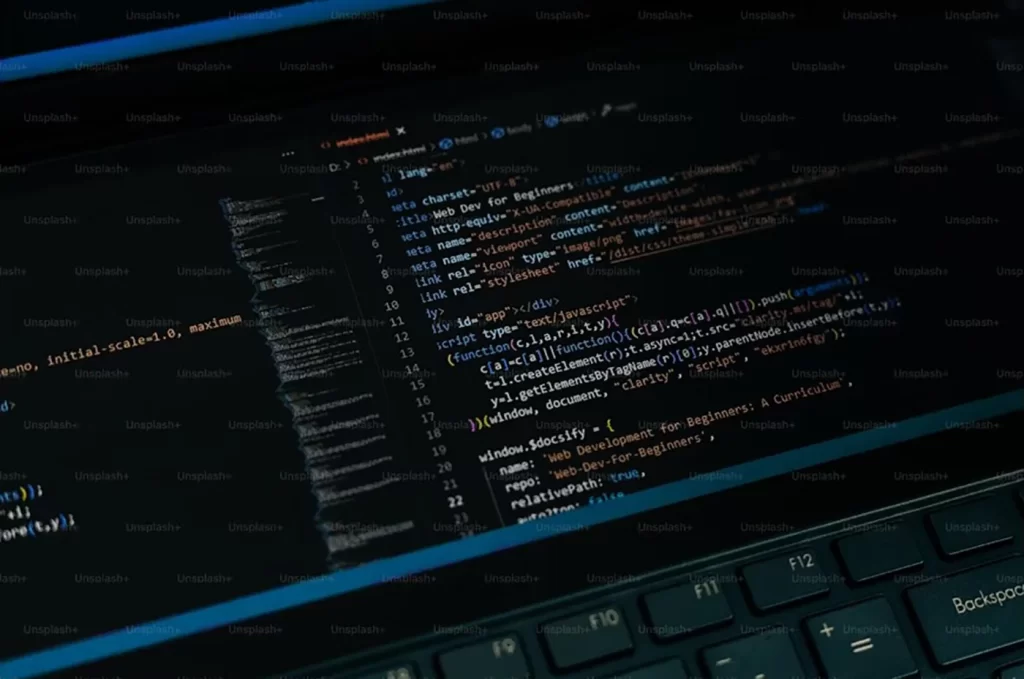Tech’s Direction in 2023 – Updates on AI and Technology by Outreinfo
Tech in 2023: Navigating Real Trends and Strategic Investments
As we look ahead to Tech’s Direction in 2023, navigating the tech landscape is always a challenging endeavor. The start of a new year presents an opportunity to reassess strategies and determine where to allocate efforts. However, distinguishing genuine trends from mere hype can be a daunting task. Reflecting on the past year, one can recall the buzz around NFTs, crypto, and the metaverse. Yet, by the fall of 2022, NFT markets experienced a significant decline, crypto entered a “cold winter,” and the bustling metaverse remained more of a distant aspiration. Differentiating true innovation from fleeting trends can make the difference between a resounding success and a costly setback.
In 2023, the tech industry is likely to adopt a more grounded approach. Geopolitical and economic uncertainties have instilled a sense of caution in the next phase of tech’s evolution. Leaders will need to explore ways to achieve more with limited resources, identify areas of convergence among innovations, and make strategic investments in technologies that are on the brink of widespread adoption. A team of technology practice leaders at McKinsey has examined what 2023 may have in store and put forth some tech resolutions to consider for the new year.
Embracing Combinatorial Trends: Unlocking New Possibilities in 2023
In 2022, we identified 14 technology trends that held the potential to revolutionize our work and lifestyles. These encompassed space technologies, clean tech, AI, and immersive reality technologies, among others. However, in 2023, executives face the challenge of not merely focusing on individual trends or bolstering software engineering capabilities but rather understanding how these technologies can synergistically combine to create novel possibilities. We refer to these as combinatorial trends.
Across various domains, from consumer to enterprise, the convergence of these trends presents exciting prospects. The key to success lies in the creative fusion of these technologies, much like mixing ingredients in a recipe. Consider the technologies integrated into a new electric car: cloud and edge computing enabling robust networks, applied AI and ML facilitating autonomous decision-making, clean energy and sustainable consumption technologies driving vehicle electrification through lightweight composites and advanced battery capabilities, and next-gen software technologies facilitating rapid development of customer-oriented features and shorter time-to-market. Trust architectures ensure secure data sharing. Collectively, these technologies amalgamate autonomy, connectivity, intelligence, and electrification, ushering in a new era of terrestrial mobility.
how various technologies such as bioengineering, immersive reality, web3, applied AI and ML,
Advances in various fields, such as bioengineering, immersive reality technologies, web3, applied AI and ML, and cloud and edge computing, are driving the development of patient-level treatments like blood type-based treatments and cell-targeting therapies. These advancements include novel tissue engineering therapies, remote therapies, enhanced traceability and interoperability of electronic health records (EHR) through web3, improved image processing and predictive health alerts using applied AI and ML, and increased data accessibility and processing capabilities through cloud and edge computing. The impact of these technologies is not just additive, but rather multiplicative in nature.
In 2023, we anticipate the scaling of these combinatorial approaches. For instance, the successful combination of bioengineering technologies, genomics, applied AI, and the industrialization of machine learning that led to mRNA vaccines could be applied to treat other diseases. Additionally, we observe a potential application of advanced mobility, advanced connectivity, and applied AI in addressing critical logistics challenges within the supply chain, aiming to enhance flexibility and resilience. When considering your technology investment plans for the coming year, it is crucial to think holistically and recognize the potential synergies between different technologies that can unlock new opportunities.
The board must proactively prepare for tipping-point technologies. Technologies like 5G, AI, and cloud computing are reaching critical junctures where they are poised for widespread adoption. Our research indicates that companies are aiming to migrate approximately 60% of their IT infrastructure to the cloud by 2025. Additionally, over 50% of companies have already implemented AI in at least one area of their operations. Despite concerns surrounding IT budget reductions or constraints, boards must maintain a sharp focus on the risks and opportunities presented by these transformative shifts.
To effectively navigate these changes, the board should prioritize allocating budget for upgrading the organization’s IT foundations, which underpin speed, security, resilience, and reusability. Although these investments may not be the most glamorous, automating processes, enhancing data infrastructure, addressing technical debt, and consistently revitalizing the IT architecture are essential. By making these foundational improvements, businesses can position themselves to fully leverage the potential of emerging technologies as they become available.

The board holds a unique position to champion this approach effectively. Unfortunately, IT priorities often emerge from individual business units or divisions, leading to fragmented decision-making. However, investments in technology foundations, also known as “IT for IT,” yield benefits that extend across the entire organization. Therefore, it becomes imperative for the board, in collaboration with top management, to take the lead in guiding and directing these efforts. As a general guideline, allocating 15-20% of IT’s change budget to this foundational work is advisable.
Leaders should not assume that the board will naturally align with this vision without proactive efforts. To enable the board’s active engagement, the CIO and CTO should establish regular and frequent dialogues with individual board members to discuss technology priorities and requirements. This ongoing communication will foster a shared understanding and ensure that the board is equipped to make informed decisions at this strategic level.
Empower your existing engineers by freeing up their time. In 2023, with layoffs and cost-cutting measures prevalent in the tech sector, tech leaders must excel at achieving more with limited resources. Rather than burdening your tech teams with additional tasks, focus on reducing their workload in areas such as administration, bureaucracy, and manual work. Surprisingly, many engineers in large organizations spend as little as 50% of their time on actual development. Just imagine the significant gains in productivity that can be achieved by improving this by a mere 10 percentage points, especially for companies with thousands of engineers.
To harness this potential, CIOs can adopt a scientific and methodical approach to engineering. Here are a few steps they can take:
• Analyze your team composition and identify your top performers. Individual engineer performance can differ significantly, up to 2-3 times, between teams.
• Evaluate and minimize distractions that consume your engineers’ time. Simple adjustments like reducing meetings or optimizing “agile ceremonies” can result in significant time savings.
• Embrace automation to eliminate manual tasks that burden engineers. Automating testing or compliance processes can greatly increase engineer capacity, allowing them to focus on what they enjoy.
Embrace the cloud revolution. CEOs have shifted their perspective on cloud computing, moving from passive acceptance to a proactive approach. This was evident when a bank CEO expressed frustration over slow progress and instead set ambitious goals and accelerated timelines.
Seize the opportunity to enhance cloud ambitions. With tech companies downsizing and skilled talent entering the job market, companies can leverage this situation to strengthen their cloud capabilities. Acting swiftly when cloud talent becomes available can propel companies forward. Strategize for a bigger and smarter cloud transition. Rather than simply migrating applications or creating test environments, companies should think innovatively about how to maximize the potential of the cloud. This is the time to think on a larger scale and make strategic moves.
Companies need to prioritize building robust cloud foundations in 2023 to fully leverage the key advantages offered by the cloud, such as application scalability and automated capacity adjustments during demand surges. This entails developing appropriate application patterns that can be applied across multiple use cases. Additionally, establishing strong cloud economics capabilities, known as FinOps, is essential. McKinsey’s recent research highlights that companies often neglect cloud costs until they exceed $100 million, resulting in wasted resources and missed opportunities for value creation. By implementing FinOps capabilities, companies can effectively monitor and manage expenditure, determine unit economics for different cloud usage scenarios, and optimize cloud offerings and pricing arrangements based on the business’s consumption requirements.
The cloud is re’haping security practices, shifting from a perc’Ived blocker to a catalyst for change that compels CIOs and CISOs to reassess security’s role and enhance the business’s risk posture. This transformation will gain momentum in the upcoming year due to several key factors.
Firstly, companies are leveraging the migration to the cloud to automate security measures. Both businesses and cloud service providers are elevating their security capabilities, investing significant resources in advanced security tools. These tools automatically scan developers’ uploaded code for cybersecurity vulnerabilities and provide recommendations for necessary fixes. Given that most security breaches stem from code and system misconfigurations, automation will significantly reduce the occurrence of breaches. Notably, one large bank witnessed a 70-80% decrease in breaches after implementing security automation. Additionally, this automated feedback loop enables developers to accelerate development pace by up to 10 times while enhancing their overall experience.
Secondly, as heavily regulated industries like banking and pharmaceuticals embrace the cloud, regulatory bodies are reevaluating their focus areas. They are increasingly prescribing security and compliance standards for cloud environments and addressing concerns such as concentration risk. For instance, regulators contemplate the scenario where a major cloud service provider experiences a service disruption affecting multiple banks. Although definitive solutions to these emerging questions may not arise in 2023, we can anticipate the emergence of new policy frameworks. Overall, the cloud’s impact on security will continue to evolve, driven by automation, enhanced regulatory considerations, and the imperative to mitigate risks in a rapidly transforming digital landscape.
Decentralized AI is revolutionizing the landscape by expanding access to advanced AI technologies that were previously limited to organizations with extensive centralized data sets. In the past year, significant progress has been made in this “decentralization” trend, with products like Stable Diffusion and ChatGPT enabling a broader range of enterprises and individuals to utilize deep learning models that were once exclusive to institutions with vast data resources. This shift has far-reaching implications, from enhancing search capabilities to boosting developer productivity.
Based on our analysis conducted through QuantumBlack and AI by McKinsey, we anticipate early indications of how decentralized AI can disrupt various sectors in 2023, particularly in entertainment, gaming, and media industries where new technologies traditionally make early inroads.
For companies in 2023, the key challenge and opportunity lie in harnessing the potential of decentralized AI and understanding its impact on their business models. CIOs and CTOs should focus on reworking their architectures to seamlessly integrate application programming interfaces (APIs) from providers like OpenAI and Stability.AI. These APIs enable the embedding of “intelligence” into a wide range of applications and processes. For example, they can offer automated code suggestions or generate code to expedite development. The ultimate goal is to infuse AI-driven intelligence throughout the entire technology stack. To achieve this, allocating sufficient resources for experimentation is crucial. Leading innovators allocate 1-5% of their revenues to innovation, as it can yield disproportionately high returns. Safeguarding this budget becomes especially important when businesses face tighter financial constraints, as effective innovation during downturns positions companies for rapid growth during economic recoveries.
In summary, decentralized AI is reshaping the AI landscape by democratizing access to advanced technologies. Companies in 2023 must seize the opportunity by integrating AI capabilities into their architectures through APIs and allocating resources for innovation, enabling them to stay ahead in a rapidly evolving business environment.
Interpreting the signals for 2023 may be challenging, but one thing is certain: how companies address their technology challenges in the coming year will significantly impact their future prospects.
For more Updates on AI & Technology by Outreinfo – Click here

